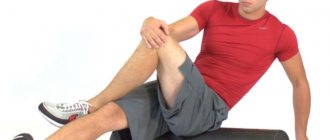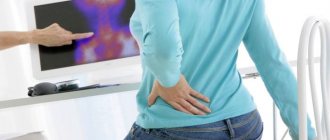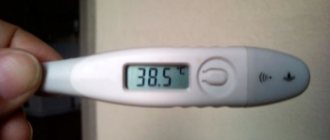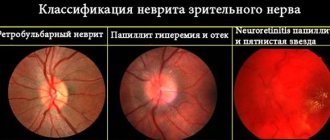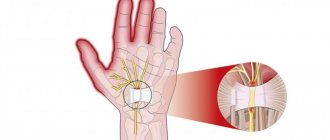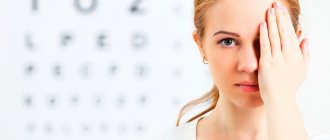Nerve endings are located throughout our body, extending from the brain and spinal cord, they send important messages throughout the body. When there is pressure (compression) on the nerves, the body sends warning messages in the form of a pain symptom. It is strongly recommended not to ignore such signals.
Location of the sciatic nerve
The sciatic nerve is the largest in the human body; it crosses 5 sections of the spine at once, going down to the leg from the lumbosacral plexus, and is responsible for innervation in the hip joint and knee joint. Where this nerve formation is located and where it passes can be seen in the figure above.
Pain in the sciatic nerve is a fairly common phenomenon, which manifests itself if the nerve roots are pinched where they exit the spine. This happens as a result of osteochondrosis, hernial protrusions, arthritis, various injuries, constant stress on the spinal column and diabetes. Regardless of the cause of the disease, patients experience pain in the lumbar region and legs.
It is important to know why your lower back hurts! After all, only in 5% of cases the cause of pain is hidden in damage to the sciatic nerve. In most cases, excessive tension and muscle strain are to blame. For a correct diagnosis, you should definitely consult a doctor, who will find out how long the pain has been, whether the nerve has been cold, and will conduct a series of examinations and tests.
Pain syndrome reduces the quality of life, interferes with movement, and in the absence of adequate treatment leads to dire consequences. That is why many people are interested in additional information about this pathology. Where is the sciatic nerve located, what are the causes and symptoms of its pinching? How does this disease progress in a person? How to prevent relapse? Are there any restrictions?
Symptoms
Pain in the area of the sciatic nerve is the most typical manifestation of its pinching. Symptoms of the lesion can be varied, pain in the buttock and along the entire length of the nerve differs in nature (it can be sharp, shooting, pulling, aching, pulsating), also, if the nerve is pinched, numbness in the leg is one of the standard manifestations of the disease.
It is important to know how the disease manifests itself! Symptoms of the disease are felt in the following areas:
- buttocks;
- small of the back;
- hip;
- shin;
- toes.
Depending on how the leg or lower back hurts, the doctor diagnoses the disease:
- the leg hurts, unpleasant sensations go down the back of the thigh to the shin and heels;
- patients complain that their leg is numb, tingling or burning;
- symptoms of pain increase when sitting, as well as when coughing, laughing and muscle tension;
- minimal dulling of pain when taking analgesics.
In addition to pain, compression of the nerve can manifest itself in difficulties during movement, prolonged standing, and chroma develops.
Signs of the disease in men are similar to the symptoms of prostatitis, the buttock hurts on the left, and numbness of the lower leg occurs on the same side.
Signs of the disease in women may be somewhat different, they vary depending on why the nerve is pinched. There is often discomfort in the lower back, the leg and buttock hurt on the right. Infringement of nerve roots during pregnancy is quite common; this is due to an increase in the size of the fetus and its pressure on the walls of internal organs. Most often, such a clamp does not require treatment; the symptoms go away after childbirth.
Sciatica can also occur if the patient has a cold in the area described. Symptoms of a cold nerve are pain concentrated in the lumbosacral region, radiating to the leg.
How to understand that this particular neuralgia has befallen you? Patients experience:
- muscle atrophy and weakness;
- sensitivity decreases or, conversely, increases;
- the skin becomes dry;
- During the examination, pathological reflexes appear;
- limited movement of limbs.
People's Councils
They may be the only available treatment for sciatica in pregnant women or patients with contraindications to medications or physical therapy. Such patients can use a compress of honey cake. To do this, honey is mixed with flour in equal proportions, placed on the sore spot, wrapped warmly.
Bay leaves (20 pieces) are infused in 200 ml of vodka for three days. The tincture is rubbed into the lower back. It takes two weeks to prepare a mash of potato sprouts in vodka. You can also try a simple cabbage compress. The leaves need to be heated in hot water for 3 minutes, applied to the sore spot and wrapped warmly. Leaves should be changed after 2 hours.
Causes of pinched sciatic nerve
Pinching is caused by irritation of the nerve roots of the lower lumbar and lumbosacral spine. The most common causes of infringement:
- lumbar spinal stenosis (narrowing of the spinal canal in the lower back);
- degenerative diseases of the vertebral discs, leading to their destruction;
- spondylolisthesis (a special condition in which the vertebrae begin to slide incorrectly;
- pregnancy;
- bruise from a fall;
- muscle spasm in the lower back or buttocks.
Other causes of pain that aggravate the patient’s condition are excess weight, lack of regular exercise, wearing high-heeled shoes, and a mattress that is too soft.
Chondroprotectors
Chondroprotectors are drugs that help the body restore connective tissue.
Osteochondrosis, herniated discs, and protrusions often cause pinching and inflammation of the sciatic nerve, so fighting them helps not only relieve symptoms, but also prevent new attacks of sciatica.
Chondroprotectors include Chondroitin, Chondroxide, Teraflex M, Sophia and other products based on chondroitin sulfate and glucosamine. They are low-toxic, so the course of treatment can last up to three months.
These ointments will not relieve pain after the first use, so they are usually used in combination with analgesics.
The sciatic nerve is pinched, what to do?
When your lower back hurts or your leg goes numb, it’s natural that you want to relieve yourself of the discomfort by taking urgent measures. However, when pinched, as in any other case, self-medication is not the answer.
The first thing to do if a nerve is pinched is to consult a doctor, without whose consultation you should not resort to any procedures. A qualified physician will determine the nature of the disease and give certain recommendations to ensure the correctness of treatment. Only an integrated approach will help get rid of discomfort in the short term.
What to do if a nerve is pinched and your lower back hurts (procedure):
- lie on your stomach on a flat surface, place your head and shoulders on a pillow, cover your body with a warm blanket;
- do not use heating pads, warm compresses and massages;
- Urgently contact a therapist or neurologist to receive a prescription for painkillers and physiotherapy.
How to quickly relieve inflammation
Damage to the sciatic nerve is accompanied by a sharp decrease in quality of life. To improve your condition with severe pain, you need to do the following:
- Take a pain reliever or anti-inflammatory drug (Ketonal, Nimesulide) as quickly as possible
- Do not make sudden movements, transfer your body weight to your healthy leg.
- If possible, take a horizontal position on a hard surface and place a cushion from available materials under your knees.
- Do breathing exercises (one long inhalation for two sharp short exhalations).
- Apply a cold compress to the affected area.
Treatment of the sciatic nerve
Pinched sciatic nerves are treated with both conservative and surgical methods, depending on the severity of symptoms and progression of the disease. Moreover, doctors usually give preference to non-invasive treatment methods, since with their help they can relieve pain with minimal risks to the patient’s health.
An integrated approach to the treatment of strangulation, involving the combination of drug therapy, therapeutic and preventive measures and adjustment of the regime, allows you to loosen the clamp and get rid of pain.
It is important to know which doctor treats this type of disease! An experienced neurologist will tell you how to relieve pain, help you quickly cure a cold or pinched nerve, and tell you how to treat during an exacerbation.
If the lower back hurts badly, what should the patient do?
In this case, bed rest is recommended; you need to lie on a hard mattress in a fixed position. After you have succeeded in calming the pain and reducing the inflammation a little, you are allowed to stand up and move around using a cane as a support.
It is also customary to treat pinching by adjusting the nutritional system, switching to a healthy and proper menu, enriched with vitamins and nutrients that promote weight loss.
Under no circumstances follow the advice of well-wishers who “know” exactly why a nerve in your leg hurts and is pinched, and how to cure such an ailment. Practice shows that with the best intentions, but due to ignorance of the true situation, you can cause even more harm to your body than in the complete absence of any action at all.
How to treat the sciatic nerve with medication
Medicines for pinched sciatic nerve are divided into several groups:
- analgesics and anti-inflammatory drugs;
- immunomodulators;
- Medicines for the sciatic nerve also include special ointments and gels that help improve blood circulation, relieve swelling and reduce the inflammatory process;
- B vitamins.
The doctor decides which drugs to treat depending on the individual needs of the patient, the severity of symptoms and the presence of allergic reactions.
Treatment with medications is prescribed in the form of tablets (the choice lies in a wide range from ordinary analgin to opioids) or injections with non-steroidal drugs. Most of these substances have a number of contraindications, so the doctor prescribes what to treat. Narcotics and muscle relaxants are used for severe pain for an extremely short period of time (from a couple of days to several weeks).
Injections for pinched sciatic nerve
In case of significant pain, pinching injections show good results. Steroids effectively relieve inflammation. Injections for pain are placed directly into the affected area located around the nerve.
Steroid injections to treat pinching have a temporary effect (relief occurs for a period of one week to a year). However, they have significant consequences, so the choice of what to inject the patient should remain with a qualified doctor.
Sciatic nerve massage
Is it possible to do massage if the sciatic nerve is pinched? As with most other diseases of the musculoskeletal system, this type of exposure helps to relax muscles and reduce soreness.
Massage for pinching can be performed even in acute stages of the disease, avoiding sudden movements and strong pressure. Only light stroking and rubbing are allowed, which helps improve blood flow in the damaged area.
How to knead and which area is determined by the specialist based on the cause of the pinching. Massage of the buttocks, lower legs, feet, and back of the thighs is allowed.
Painkillers
To alleviate the patient's condition, non-steroidal anti-inflammatory drugs are prescribed in the form of tablets and injections. The attending physician determines how to relieve pain in each specific case; Ibuprofen, Piroxicam, Ortofen and others are most often prescribed.
Ointments
Creams and ointments for pinched sciatic nerves help relieve muscle spasms and reduce inflammation. Homeopathic ointments for the treatment of this disease and alleviation of its symptoms, Traumeel S and Zel T, are successful.
Products with a warming-irritant effect are also used. The name of the ointment is Finalgon, Nicoflex and others.
Sciatic nerve block
Drug blockade for pinching is used only in complex cases when traditional therapy methods are not effective. The following drugs are used to relieve pain with medication:
- novocaine;
- lidocaine;
- diclofenac;
- movalis.
The technique for performing this procedure involves injecting the drug into a specific point directly above the nerve. When giving consent to a blockade, you should be confident in the skill of the specialist, as there is a risk of nerve damage.
Manual therapy
Manual adjustment of the position of the spine (manual therapy) is performed by a specially trained specialist and helps reduce pain. However, the choice of a chiropractor should be approached with maximum responsibility and procedures should be performed only on a massage table.
Surgery for pinched sciatic nerve
Surgery on the sciatic nerve is prescribed only in emergency cases, with progressive weakness in the legs, loss of bowel and bladder control.
Exercise therapy for pinched sciatic nerve
A specially designed set of exercises allows you to develop the affected area. Initial attention is paid to the fingers and feet, and after the pain has decreased, gymnastic exercises are supplemented with tasks for other muscle groups.
Acupuncture
Hair-thin needles are inserted into specific points on the body located near the affected area. Usually the effect is painless and shows good results.
Swimming
Exercises in the pool under the supervision of an experienced instructor help you return to your normal pace of life and eliminate the consequences of pinching.
Kuznetsov applicator
This device is an effective measure for treating a pinched sciatic nerve at home. It is commercially available and shows impressive results.
Droppers
To increase the rate at which medications enter the bloodstream, they can be administered in the form of an intravenous drip. This is how B vitamins or painkillers are administered.
Yoga
Recommended as an effective therapy and prevention of pinching. Helps relax muscles, strengthen the muscle corset, get rid of pain and depression.
Electrophoresis
A course of electrophoresis with no-shpa is often prescribed as a physiotherapeutic procedure for the described disease. Allows you to quickly get rid of unpleasant symptoms.
Physiotherapy
The list of possible procedures is quite large, in addition to those already mentioned - UHF, paraffin baths, magnetic therapy and others.
Treatment of the sciatic nerve with leeches
To avoid complications, it is strictly not recommended to perform this procedure yourself. With a qualified approach, it helps to establish blood supply in the affected area and relieve swelling and inflammation.
Folk remedies for treating sciatic nerve
Treating strangulation with folk remedies is a fairly common practice. However, it is worth approaching this process wisely and combining traditional medicine methods with traditional therapy.
Popular folk methods:
- treatment with apple cider vinegar and honey (a compress of a glass of honey and a tablespoon of vinegar);
- a heated honey-alcohol mixture (300g per 50 ml) is rubbed in during massage;
- crushed burdock root for the sciatic nerve, mixed with a glass of Cahors, heated, strained and drunk in two doses;
- bathroom with pine shoots.
The listed methods and any other methods are used only after consultation with a doctor.
Treatment at home
Most often, pinching treatment is carried out on an outpatient basis (at home).
After the examination, the doctor makes a diagnosis, thinks through how to treat the patient in each specific case, prescribes a course of medications, most often non-steroidal anti-inflammatory drugs in the form of tablets and injections, as well as analgesics if necessary. Usually the patient is told how to calm the pinched nerve and heal himself as quickly as possible at home.
Naturally, treatment of pinching with the help of massage, acupuncture, acupuncture and a number of physiotherapy procedures should be carried out in rooms specially designed for this, but you can help yourself in some ways on your own.
Treating the nerve at home can be done by taking warm sitz baths to relieve acute pain, aromatherapy, and performing prescribed physical exercises. All this will help in unblocking the nerve root compressed by spasm and speed up your recovery.
You can find out more about how to treat a nerve in your leg from your neurologist.
Complications
Sometimes when a nerve is compressed, blood vessels are compressed. In this case, the tissues do not receive sufficient nutrition, which can lead to complications.
The main task with sciatica is to prevent the death of nerve fibers. This can have dire consequences, even causing the person to become disabled. This situation happens in advanced cases when the nerve endings have already atrophied.
Paralysis can be a dangerous complication. It develops with prolonged numbness and loss of control of the leg. The person does not feel the lower limb.
If the cause of nerve damage is a serious infection (tuberculosis, pleurisy), disorders such as urinary and fecal incontinence may develop.
It is important to remember that the disease can develop quickly or slowly. But its course and elimination depend on the joint actions of the doctor and the patient. Self-medication for a pinched sciatic nerve is unacceptable. During an acute attack, it is important to behave correctly and not make sudden movements.
Implications and Limitations
In the absence of adequate treatment for this neuralgia, the patient’s quality of life and his ability to care for himself are significantly reduced. Constant severe pain when pinched affects the emotional state, leading to depression and insomnia. Also, such a disease is dangerous due to possible damage to internal organs and curvature of the spine.
Patients are often interested in whether it is possible to heat the sciatic nerve. The answer to this question depends on the specifics of the disease. In some cases, dry heat is indicated; in some cases, it is recommended to replace it with cold heating pads. Therefore, to obtain personal recommendations, you should contact a qualified specialist.
Follow all the neurologist’s prescriptions, wisely combining methods of traditional and traditional medicine, physiotherapeutic procedures and reasonable stress, then a positive result will not be long in coming.
Rehabilitation
During rehabilitation, traditional methods of treatment are often used. It is recommended to continue doing special physical exercises and leading an active lifestyle. Also important:
- control weight;
- monitor your general health;
- if your health worsens, contact your primary care physician;
- eat right (meals should be organized).
For problems related to the sciatic nerve, a device called Denas (promoting dynamic electrical nerve stimulation) can help. With it you can carry out physiotherapy procedures at home. Exercises on special simulators, for example, Bubnovsky, are useful.
You should not suddenly stop exercising, refuse the prescribed diet or other doctor’s prescriptions after your condition improves. It is important that the positive result sticks.
Some exercises using the Bubnovsky method
Nonsteroidal anti-inflammatory drugs
NSAIDs are the widest group of substances that have proven themselves in many branches of medicine due to their high efficiency, speed and ease of use. The active substance, applied to the skin in the projection of the affected area of the nerve, penetrates deep into the tissue.
There, binding of inflammatory mediators occurs, which allows you to remove all its components and alleviate the patient’s condition. It is recommended to use these drugs for 3 to 5 days in order to avoid the occurrence of adverse reactions.
Use is contraindicated for persons with:
- Skin diseases;
- Individual intolerance to the drug;
- Peptic ulcer of the stomach and/or duodenum;
- Kidney or liver failure;
- Pregnancy, lactation;
- Aspirin asthma;
- Type II diabetes;
- Childhood;
- Heart failure.
Homeopathic remedies
Not all experts recognize the effectiveness of homeopathic medicines containing ultra-low dosages of active ingredients.
Research data on this topic is also contradictory.
However, it is worth remembering that, unlike their potent analogues, they have virtually no contraindications or side effects, so they can be used in childhood, pregnancy and against the background of sciatica-related diseases.
For sciatic neuralgia, two homeopathic ointments are usually used - Traumeel and Tzel T. They contain components of plant and animal origin, as well as sulfur, one of the most important microelements for the health of cartilage tissue. They have a mild anti-inflammatory effect.

